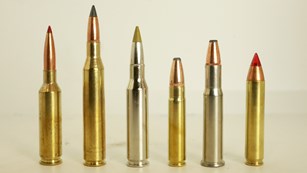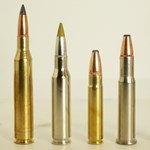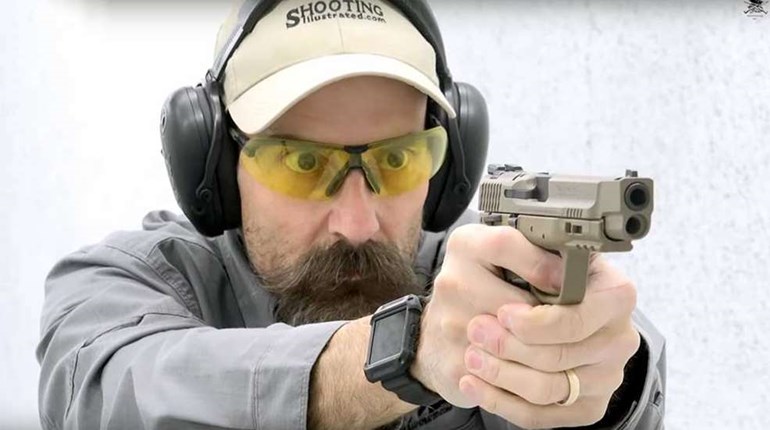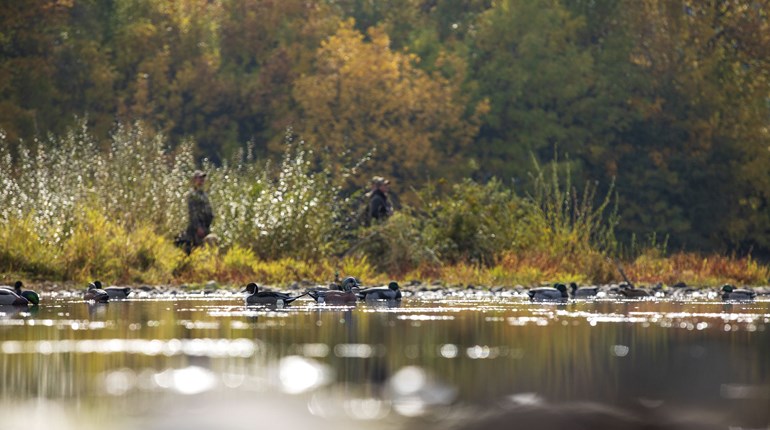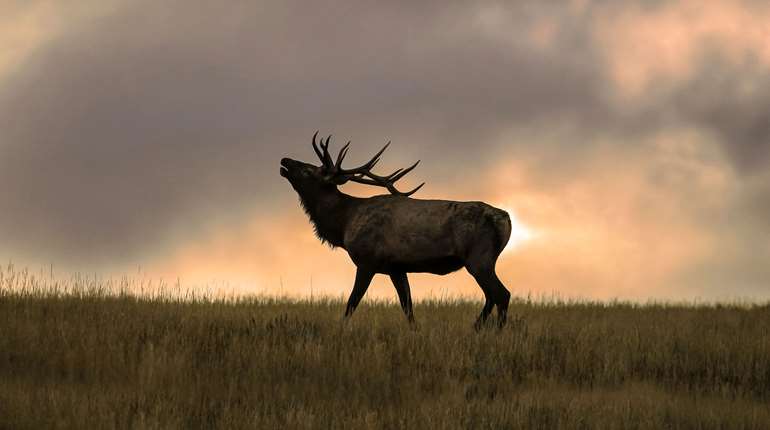
Call it pessimistic, but when hunting, there are more ways to fail than succeed. In fact, that things go as desired as often as they do is quite remarkable. Case in point—two days before this piece was penned a hot, humid action-less September evening on an impoundment culminated in my best goose hunt to-date.
What made it special? Patience, and the knowledge (previous experience and reading sign) that they’d be there as legal shooting time wound down. In 10 minutes’ time, I bagged eight birds, half of which were banded—a fifty-fifty ratio. The heat and “obligations” kept the other waterfowlers off the water, so they missed out. So sad.
Hunting is an undertaking that’s full of highs and lows, most frequently attributed to successes and failures. Sometimes we meet the latter through no fault of our own. At other times, though, the blame is squarely on you—me included—whether you’d like to admit it or not. If you’d like to avoid seven pitfalls that lead to failure, read on.

Make Excuses
“He that is good for making excuses, is seldom good for anything else.” Attributed to Founding Father Ben Franklin, the maxim holds especially true with regard to hunting. Nobody wants to hear excuses—no one. You shouldn’t either, especially if they’re made to yourself. Too often we make excuses to avoid inconveniences or discomforts that we’ll encounter when afield or getting there. Need proof? Have you ever said (even to yourself) “I’m … sore, too tired, or feel ‘under the weather.’” Or, “It’s … cold (or hot), raining, snowing, etc.” I’m guilty, and it’s likely you are, too. Problem is, it costs you opportunities, and time lost is time lost forever.
Sure, some situations can demand foregoing hunting, such as break-downs, family illnesses, appointments, and your 9-5, to name a few, but in most cases let’s call it what it is—laziness or lack of discipline. In your mind, there’s always another day; however, time is short and nothing is guaranteed, including tomorrow. Trust me, I know well. Your health can fail, permission can be lost, and friends can pass—sad, but true. Embrace the moment.

Speaking from experience, some of my best hunts occurred on mornings that, after silencing the alarm, I debated heading to the woods or waters. My mind generated excuse after excuse to stay in a cozy bed, but ultimately I pressed forward. Once hunting, I’ve never regretted losing sleep; there will be plenty of time for that down the road.
By its nature, hunting often requires discomfort. Knowing this, ignore the excuses and forge ahead. Don’t sleep in or call it early once afield. If you do, you’ll only encounter failure.

Fail to Practice
In your mind, you’ve done everything right and the moment to punch your long-awaited tag is at hand. But you botch the shot. The door of opportunity has now closed, and it looks like you’ll be having tag soup for dinner. Why? Simple. You dedicated little to no time to practice.
Hunting isn’t fishing, and second chances are uncommon—especially for trophy caliber animals. Moreover, it’s not catch and release, so when the decision to pull the trigger is made, it’s your responsibility to accurately place the broadhead or projectile(s). You owe the animal a swift demise.
Delivering a rapid, ethical kill requires knowledge of the weapon and preparation at the range or back-forty. Archers and crossbow hunters must precisely know the speed and trajectory (at various ranges) of his/her setup, as well as establish the furthest distance he/she can comfortably make a lethal hit and stay inside of it. The exact setup to be used in the field should be tested, as well as while wearing clothes of varying thicknesses.

Rifles, muzzleloaders, and revolvers are no different. After ensuring snugness of the optics mounting system, the scope must zeroed at the optimal distance, be it 50, 100, 150 or 200 yards. The maximum shot distance (you’re comfortable making and/or at the hunting locale) and cartridge’s ballistics are the key determinants for this number. Once the load’s velocity (preferably the actual, and not just what’s printed on the box) and bullet’s ballistic coefficient (BC), along with rifle’s configuration, are known, a ballistics calculator (available on the websites of Hornady, Berger, and others) makes identifying the ideal zero distance quite easy. However, the bullet trajectory chart that’s generated by said calculators must be verified for accuracy before pursuing quarry. Additionally, you must practice firing from field positions—prone, kneeling, and sitting; it’s unlikely that your shooting bench will accompany you to the woods. The more adaptable you are, the better the odds that you’ll find success.

Shotguns require more effort to enter the field prepared. So often, hunters pursue winged quarry without practicing on moving targets such as clays, and don’t pattern a given shotgun, choke tube and shell combination before pursuing game. That’s a horrible idea. Shotguns, like rifles, are individualistic and perform admirably with some choke/shotshell pairings, while serving only to waste time and cripple game with others. You owe it to yourself and the quarry you pursue to understand your shotgun and practice extensively with it.
Buckshot hunters in particular need to spend extra time at the patterning board. To establish a distance at which you can consistently deliver hog- and deer-dropping patterns generally requires testing multiple loads and chokes on paper. There is no shortcut. Do the work and you’ll be surprised by what a shotgun loaded with buckshot can do.

Gear Over Knowledge
If you haven’t noticed, we live in a consumer society; advertising is omnipresent and wildly successful at emptying our wallets. Not all purchases are bad, nor optional. Fall restraints, GPS, fire starters, knives, first-aid kits, conditions-appropriate clothing (and waders), and similar items are essential to self-preservation, and thus are non-negotiable. So too are those items required to remain compliant with laws, such as fluorescent orange (or pink) clothing, maps or mapping apps (eg. OnX), and equipment for watercraft. Safety is not where you want to be frugal.
Not life-saving yet still important kit includes quality spotting scopes, riflescopes, binoculars, and rangefinders (if separate from the binocular) to name a few. Don’t forget the firearm, muzzleloader, or bow/crossbow, and the ammunition/bolts/arrows and accessories needed to use them. Extra money spent here is generally prudent.

Too often hunters attempt to substitute skill and knowledge of the game they’re pursuing with gear, such as scent elimination products, technical apparel, custom calls, animal waste or synthetic replacements (urines, secretions, etc.), and attractants (unless hunting feral hogs or bear, and where legal). They’re mostly unnecessary. You’re better off learning the terrain features and the animal’s habits, noting the trends of fellow hunters (if applicable), playing the wind, following the weather and moon phases, and learning about the quarry via research (magazines, books, and online resources). You’ll be more successful than if purchasing the newest “technical camo.”
Case in point; this past spring, on a rainy morning, I hunted a boisterous bird in an area where I’d previously (days earlier) killed an exceptionally large tom. The latter had gobbled non-stop to me on the roost, but pitched to an open cow field adjacent to mine. I killed him after some nifty, mid-morning maneuvering. Given that the first bird had a hen in that field when he met his end, I surmised the second gobbler would do the same. I approached as close as I dared, called with my Primos The Karen mouth call, and dropped him with a 20-gauge Benelli M2 as soon as his feet touched the ground. The tom couldn’t have landed more perfectly. High-end decoys, proprietary camo, and other items were unnecessary. Knowledge of the gobblers’ behavior led to success.

Remember those eight Canada geese mentioned at the outset of this article? Those were killed using five floater and dekes, an upgraded circa 2005-Tim Grounds call, a mishmash of camouflage, and hiding amongst the natural flora. That was all the coaxing several hundred geese needed. Buy what’s needed, not into the marketing hype.

Following the Crowd and Refusing to Adapt
“Following the crowd” is simply herd mentality. Hunters can be influenced by others (especially social media “influencers”) to buy or use certain gear (see previous section), or simply mimicking the behaviors of those—friends, acquaintances, and strangers—sharing the woods and waters with them. Concerning the latter, if you’re learning field craft by someone who’s knowledgeable and isn’t trying to sell you something (a.k.a. influencers), you can learn much and reap the rewards. However, mimicking foolhardy practices only sets you up for failure.
As an example, I’ve witnessed hunters park their ATVs exceedingly close to their fixed-position tree stand, which they hunt ceaselessly. Unsurprisingly, the shots are few and trophy quality is laughably low. Meanwhile, after reading the wind, I select a good spot to sit (usually on the ground or in a pop up blind) and stop the ATV well short of where I’m hunting—if I use it at all. Majority of the time it stays on the trailer until I need it to extract a downed big-game animal. The result is increased sighting, kills and higher quality animals. So often I’m asked how I see so much when hunting the same property. But my suggestions go unfollowed. To each their own.
Similarly, I’ve witnessed Virginia wildlife management area (WMA) hunters get on a trail and hike to the furthest reaches of the property, which is good in theory, but many others do the same. That’s okay with me, because I’ve killed the public land toms that they bypassed within 300 to 400 yards of the parking area. Oftentimes, success only requires stepping back or slowing down to see the obvious, or what’s overlooked by others. Following the crowd in the field, like fashion and collectible trends, tends not to end how you think. Be flexible, open-minded, question others’ actions and motives, and blaze your own trail, or you’ll likely find failure.

Fail to Prepare
“If you fail to plan, you are planning to fail.” Yet another quote from Ben Franklin, it’s especially applicable for hunters. Not planning for a hunt can still result in success, but it’s more likely to end in a boondoggle—or perhaps your demise, especially when pursuing game in hostile environments or during extreme weather.
Hunting season doesn’t surprise you; the dates are known well in advance so there’s plenty of time to prepare. Once the decision is made to hunt (species and locale), it’s time to start planning. You’ll need to know the weather (temperature, precipitation, and wind, especially), so that you’re prepared gear-wise and to anticipate challenges. Inadequate clothing can send you home early, thereby hampering success, or, at worst, take your life. Know the forecast, and if on the water, warnings and tide charts. Backup plans are a must, as is survival equipment and notifying others of your plans. What can go wrong, will, so you must be prepared.
As the Navy S.E.A.L. adage states, “Two is one, one is none” Adhering to this sage advice, always have backups—firearms (if possible), arrows/bolts, broadheads, ammunition, tools, strings, calls, flashlights—on hand, as without these a hunt can end prematurely and/or without a satisfying ending.

Here's how I learned this firsthand. While hunting sea ducks on Virginia’s Eastern Shore, which required a specific distance from any shoreline, I found my unfailing Benelli SBE 2 turned into a glorified single-shot when a few small pieces of debris (mostly sand) got wedged between the magazine tube and the follower. And the long tails and scoters were atypically active in the turbulent water that morning. By happenstance, that very day was the first time in years that I didn’t bring a backup shotgun. Failing to free the follower with what I had on board the vessel, I had to pull the decoys and motor into the boat launch, retrieve the boat, and go to the hotel to remedy the issue before reversing the process. Valuable time was lost. Lesson learned.
Lastly, ensure that you review (and understand) the hunting regulations—laws change regularly—and secure all of the necessary licenses and tags in advance. Waiting until the night before could prove problematic.

Holding Off
I enjoy hunting with family and friends, as well as acquaintances; however, I learned many years ago that depending on, as well as waiting for, others will cause much grief and loss of opportunity. Don’t get me wrong, I understand that people are busy and life nowadays demands much; but you’ll find that if you’re only willing to hunt when others accompany you, you’ll be missing out—a lot. People can be fickle, and hunting requires conceding time spent elsewhere. Combine that reality with challenging conditions (travel, weather, etc.) and you’ll get excuses.
Obviously, this doesn’t apply to those needing assistance, such as youth or those requiring support due to age and/or medical conditions. Even if you hunt closer, don’t sacrifice your time holding off for others. You’ll regret doing so. Just make sure someone is aware of your plans if you’re going out alone.

Being Impatient & Giving Up Easily
Patience and perseverance are critical to finding success in the field. Trust me, you’ll encounter circumstances that’ll make you want to quit, but you must push through. As former Navy S.E.A.L. and motivational speaker advocates, “Embrace the suck.” Discomfort is temporary, and time is short.
You must also be patient. I cannot count the number of times that waiting an extra 15, or even 10, minutes enabled me to kill a mature tom, a limit of ducks, or a wall hanger buck. Again referring to that unforgettable goose hunt, I was contemplating pulling the dekes when the watch showed 15 minutes of legal shooting time remaining and the sky was devoid of birds and it was eerily silent. But I talked myself into waiting. Good thing too, as hundreds of geese poured in as those final minutes ticked away and the Franchi Affinity 3 sent HEVI-Shot and steel downrange.
Patience has brought me many turkeys, too. Waiting for gobblers to return after tending their hens has added many beards to the collection. So too has staying in-place after a once-boisterous gobbler goes silent (when sneaking in). Remember, you’re on the animal’s time, and rushing tends not to end well for wildlife. Their schedule doesn’t always align with yours, but that’s hunting.
With time and experience, you’ll know when to risk a move or “call it a day” early; otherwise just enjoy the outdoor experience. Be patient and, provided there’s no safety concern, have the discipline to see the hunt through to its conclusion. You’ll be surprised at how few times you come home emptyhanded.
World heavyweight boxer Jack Dempsey once declared, “Success is never accidental.” I agree. Equally, if you’re a hunter undertaking any of the self-sabotaging methods mentioned in this article, failure isn’t accidental, either.







